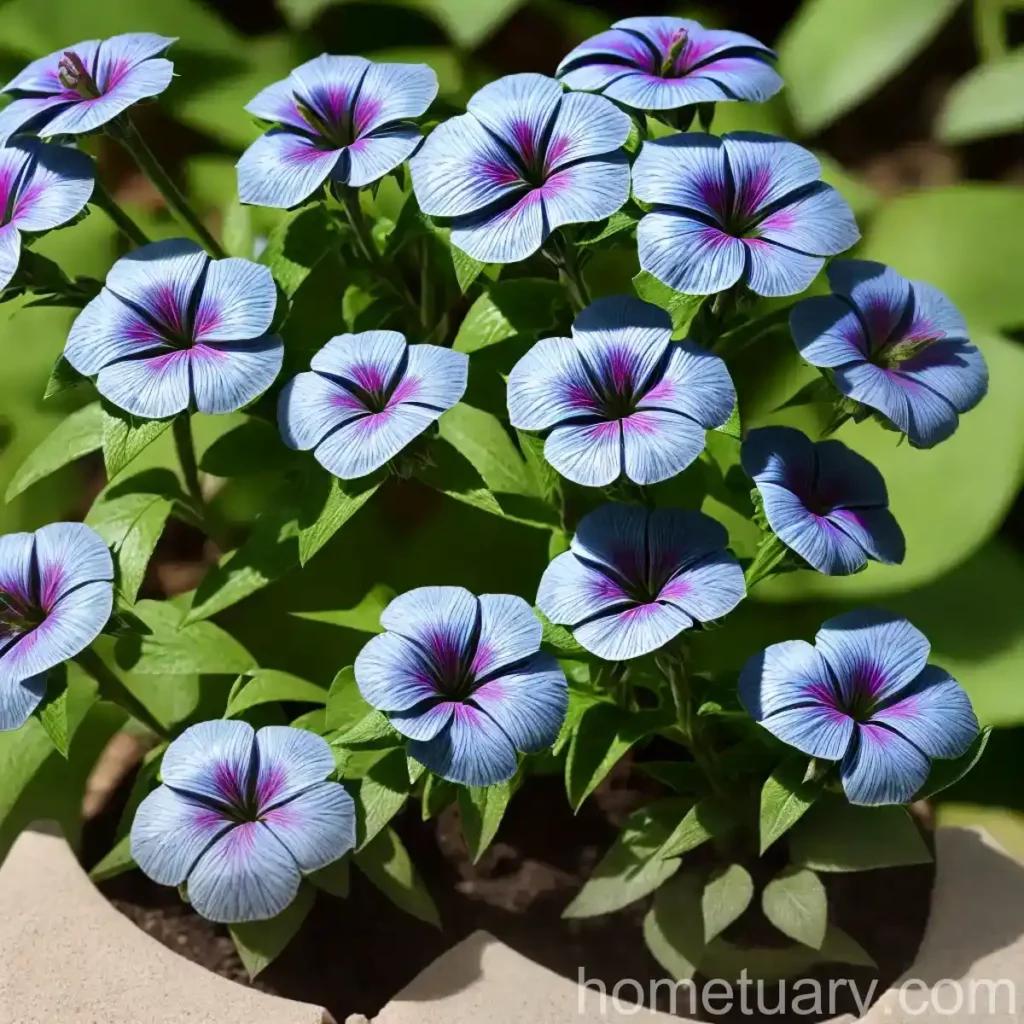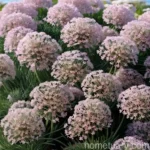The Fascinating World of Ceratostigma Abyssinicum: A Detailed Guide
Plants are an integral part of our ecosystem and play a crucial role in maintaining the environmental balance. As a plant scientist, I find every plant species unique and intriguing in its own way. In this comprehensive guide, we’ll delve into the intricacies of the Ceratostigma abyssinicum, commonly known as the Abyssinian Leadwort.
What is Ceratostigma Abyssinicum?
Ceratostigma abyssinicum is a perennial plant species that belongs to the Plumbaginaceae family. This plant is native to eastern Africa, specifically Ethiopia, where it thrives in its natural habitat of rocky grasslands and hillsides. With its striking blue flowers and vibrant foliage, Ceratostigma abyssinicum has gained popularity not only as an ornamental plant but also for its various cultural and medicinal uses.
Key Takeaways
- Plant Name: Ceratostigma Abyssinicum
- Family: Plumbaginaceae
- Common Names: Abyssinian Leadwort, African Plumbago
- Native Habitat: Eastern Africa, particularly Ethiopia
- Growth Habit: Perennial
Now, let’s explore the various aspects of Ceratostigma abyssinicum, from its cultural significance and uses to its preferred growing conditions and maintenance requirements.
Cultural Significance
In its native region of Ethiopia, Ceratostigma abyssinicum holds cultural significance and has been traditionally used for various purposes. The plant’s leaves and roots have been utilized in traditional medicine for their purported therapeutic properties. Additionally, in some communities, the plant has symbolic significance and is used in traditional rituals and ceremonies.
Uses
Ceratostigma abyssinicum is valued for its diverse uses, ranging from landscaping and ornamental purposes to medicinal applications. The plant is renowned for its stunning blue flowers, making it a desirable choice for ornamental gardens, parks, and landscapes. Moreover, its potential medicinal properties have piqued the interest of researchers and herbalists, leading to further exploration of its potential benefits.
Growing Ceratostigma Abyssinicum
Now that we’ve gained insight into the cultural significance and uses of Ceratostigma abyssinicum, let’s delve into the essential aspects of cultivating and caring for this remarkable plant.
Water
Proper watering is crucial for the health and growth of Ceratostigma abyssinicum. While the plant is drought-tolerant once established, it’s essential to provide regular watering during the initial stages of growth and in periods of prolonged drought. However, it’s equally important to ensure well-draining soil to prevent waterlogging, which can adversely affect the plant’s root system.
Sunlight
Ceratostigma abyssinicum thrives in full sun to partial shade. In its natural habitat, it is accustomed to bright sunlight, and replicating similar conditions in cultivation is key to ensuring healthy growth and abundant flowering. When grown in regions with intense heat, providing partial shade during the peak hours of the day can prevent sunscald and stress on the plant.
Fertilizer
Applying a balanced, slow-release fertilizer in the spring can support the growth and blooming of Ceratostigma abyssinicum. However, it’s important to refrain from excessive fertilization, as this can lead to excessive foliage growth at the expense of flowers. Additionally, incorporating organic matter into the soil during planting can provide essential nutrients for the plant’s development.
Soil
Well-draining, loamy soil is ideal for Ceratostigma abyssinicum. The plant thrives in slightly acidic to neutral soil that is rich in organic matter. However, it is adaptable to a range of soil types, provided that they offer good drainage. Avoiding waterlogged or compacted soil is essential to prevent root rot and other detrimental conditions.
Pruning
Pruning helps maintain the shape, health, and blooming potential of Ceratostigma abyssinicum. In late winter or early spring, pruning any damaged or dead stems and shaping the plant can promote vigorous growth and abundant flowering. Additionally, removing spent flowers can encourage the production of new blooms.
Propagation
Ceratostigma abyssinicum can be propagated through various methods, including division, stem cuttings, and seeds. Each method offers its own advantages and challenges, allowing gardeners and horticulturists to choose the most suitable approach based on their specific requirements and resources.
Container Popularity
Due to its compact growth habit and stunning floral display, Ceratostigma abyssinicum is well-suited for container gardening. The plant’s versatility and ability to thrive in containers make it a popular choice for patios, balconies, and other outdoor spaces where ground planting may not be feasible.
Common Diseases and Pests
While Ceratostigma abyssinicum is relatively resistant to pests and diseases, it is susceptible to certain issues that can affect its overall health. Being aware of these potential challenges and adopting preventive measures can help maintain the plant’s vigor and vitality.
Common Diseases
-
Powdery Mildew: This fungal disease can affect the foliage of Ceratostigma abyssinicum, leading to a powdery white coating on the leaves. Adequate air circulation and proper spacing can help prevent powdery mildew.
-
Leaf Spot: Fungal leaf spot diseases can occasionally occur, leading to the formation of dark spots on the leaves. Avoiding overhead watering and maintaining proper sanitation practices can mitigate the risk of leaf spot.
Disease Diagnosis
Promptly identifying and diagnosing any diseases or abnormalities in Ceratostigma abyssinicum is essential for implementing effective treatment and control measures. Vigilant observation and regular inspection of the plant can aid in early detection and mitigation of potential issues.
Common Pests
-
Aphids: These small, sap-sucking insects can infest the tender growth of Ceratostigma abyssinicum, leading to distorted leaves and stunted growth. Natural predators and insecticidal soaps can help manage aphid infestations.
-
Spider Mites: These tiny arachnids can cause stippling and discoloration of the leaves. Regularly spraying the plant with water and applying neem oil can help control spider mite populations.
Botanist’s Tips
-
Companion Planting: Pairing Ceratostigma abyssinicum with companion plants such as lavender, salvia, and ornamental grasses can enhance the visual appeal of the garden and create a harmonious planting scheme.
-
Winter Protection: In regions with cold winters, providing a layer of mulch around the base of the plant can offer insulation and protection from freezing temperatures.
Fun Facts
-
Ceratostigma abyssinicum’s vibrant blue flowers attract pollinators such as bees and butterflies, contributing to the ecological diversity of the garden.
-
The plant’s leaves exhibit an intriguing color change in the fall, transitioning from green to hues of red and purple, adding a captivating visual element to the landscape.
Now, armed with a deeper understanding of Ceratostigma abyssinicum, you can embark on the journey of cultivating, admiring, and appreciating the remarkable qualities of this unique plant species. Whether you’re a seasoned gardener, a horticulture enthusiast, or someone with a burgeoning interest in plants, Ceratostigma abyssinicum offers a wealth of beauty and botanical intrigue to explore.















